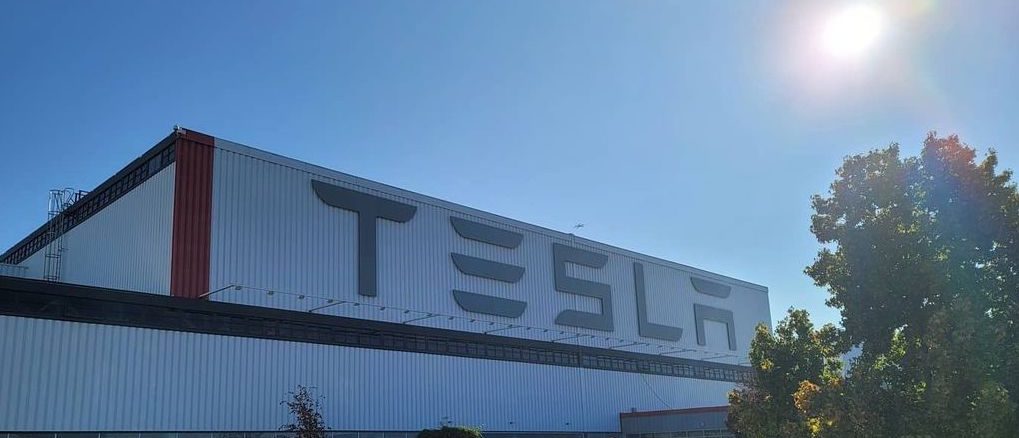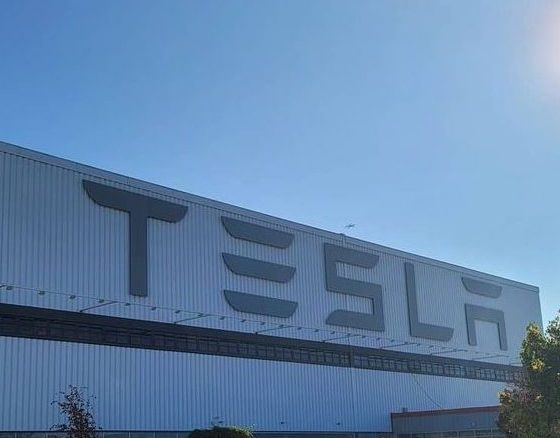

Investor's Corner
Tesla prepares for S&P 500 inclusion: What TSLA investors can expect
Tesla (NASDAQ:TSLA) will officially join the S&P 500 index on December 21. Friday’s market activity may set the stage for TSLA’s grand entrance into the S&P 500 index.
The following are some factors to keep in mind as Tesla enters its final trading day before its formal inclusion into the S&P 500.
Quadruple Witching
Quadruple Witching occurs on the third Friday of the month every quarter in March, June, September and December. During quadruple witching, single-stock options, stock-index options, single-stock futures, and stock-index futures expire.
The last trading day before Tesla enters the S&P 500 index will be a quadruple witching day. Traders told the Wall Street Journal (WSJ) that heavy volumes from expired options and futures could boost liquidity, resulting in a smooth entry for TSLA into the S&P 500 index. RBC Capital Markets estimates that 3% of about $4.7 trillion assets passively tracking the S&P will trade on Friday.
Dark Pools aka Alternative Trading Systems (ATS)
Dark Pools are private exchanges, usually between entities like big banks or institutional clients. Dark Pools give investors the opportunity to place large orders without disrupting the public exchange price while they were looking for a buyer or seller.
Some Tesla investors have wondered if Dark Pool orders were reflected in TSLA’s recent stock activity, especially in terms of volume. According to Rob Maurer of Tesla Daily, the identities of ATS clients are not disclosed but their orders are reported through consolidated tapes, which are also called tape reports.
Dark Pool orders are immediately recorded on tape reports no later than 10 seconds after execution to the Trade Reporting Facilities (TRFs) run by Nasdaq and NYSE in conjunction with FINRA. FINRA considers Dark Pool orders as Over-the-Counter (OTC) equity transactions. OTC equity transactions executed outside normal market hours must be reported by 8:15 a.m. (EST) by the next market open.
Closing Cross Expectations
According to Nasdaq, Closing Cross orders make up almost 10% of its average daily volume. On-close orders allow investors to specifically request an execution at the closing price.
Closing Cross orders could set the weight and price of TSLA as it enters the S&P 500 on Monday, December 21. Tesla investors believe Tesla’s market activity will significantly increase a few minutes before and after the closing bell. Maurer explained that index tracking funds would probably try to buy shares at the closing price to match the S&P 500’s performance as close as possible.
Tracking Errors
Tracking Errors usually occur when an ETF or hedge fund does not effectively match the performance of its benchmark. Given Tesla’s dedicated retail investors, some traders question whether enough sellers will be available during Friday’s trading to fill the large orders index funds are expected to buy at the market close.
If there aren’t enough sellers to fill buyer orders, it could result in big swings for Tesla shares, reported the WSJ.
TSLA stock closed at $655.90 per share at the closing bell on Thursday. As of this writing, Tesla stocks are up 2.91% at $674.74 per share.
Watch Tesla Daily‘s video below to learn more about Dark Pools and On-Close orders.
The Teslarati team would appreciate hearing from you. Leave a comment down below or email us at tips@teslarati.com. You can reach me at maria@teslarati.com.

Investor's Corner
Tesla stock closes at all-time high on heels of Robotaxi progress

Tesla stock (NASDAQ: TSLA) closed at an all-time high on Tuesday, jumping over 3 percent during the day and finishing at $489.88.
The price beats the previous record close, which was $479.86.
Shares have had a crazy year, dipping more than 40 percent from the start of the year. The stock then started to recover once again around late April, when its price started to climb back up from the low $200 level.
This week, Tesla started to climb toward its highest levels ever, as it was revealed on Sunday that the company was testing driverless Robotaxis in Austin. The spike in value pushed the company’s valuation to $1.63 trillion.
Tesla Robotaxi goes driverless as Musk confirms Safety Monitor removal testing
It is the seventh-most valuable company on the market currently, trailing Nvidia, Apple, Alphabet (Google), Microsoft, Amazon, and Meta.
Shares closed up $14.57 today, up over 3 percent.
The stock has gone through a lot this year, as previously mentioned. Shares tumbled in Q1 due to CEO Elon Musk’s involvement with the Department of Government Efficiency (DOGE), which pulled his attention away from his companies and left a major overhang on their valuations.
However, things started to rebound halfway through the year, and as the government started to phase out the $7,500 tax credit, demand spiked as consumers tried to take advantage of it.
Q3 deliveries were the highest in company history, and Tesla responded to the loss of the tax credit with the launch of the Model 3 and Model Y Standard.
Additionally, analysts have announced high expectations this week for the company on Wall Street as Robotaxi continues to be the focus. With autonomy within Tesla’s sights, things are moving in the direction of Robotaxi being a major catalyst for growth on the Street in the coming year.
Elon Musk
Tesla needs to come through on this one Robotaxi metric, analyst says
“We think the key focus from here will be how fast Tesla can scale driverless operations (including if Tesla’s approach to software/hardware allows it to scale significantly faster than competitors, as the company has argued), and on profitability.”

Tesla needs to come through on this one Robotaxi metric, Mark Delaney of Goldman Sachs says.
Tesla is in the process of rolling out its Robotaxi platform to areas outside of Austin and the California Bay Area. It has plans to launch in five additional cities, including Houston, Dallas, Miami, Las Vegas, and Phoenix.
However, the company’s expansion is not what the focus needs to be, according to Delaney. It’s the speed of deployment.
The analyst said:
“We think the key focus from here will be how fast Tesla can scale driverless operations (including if Tesla’s approach to software/hardware allows it to scale significantly faster than competitors, as the company has argued), and on profitability.”
Profitability will come as the Robotaxi fleet expands. Making that money will be dependent on when Tesla can initiate rides in more areas, giving more customers access to the program.
There are some additional things that the company needs to make happen ahead of the major Robotaxi expansion, one of those things is launching driverless rides in Austin, the first city in which it launched the program.
This week, Tesla started testing driverless Robotaxi rides in Austin, as two different Model Y units were spotted with no occupants, a huge step in the company’s plans for the ride-sharing platform.
Tesla Robotaxi goes driverless as Musk confirms Safety Monitor removal testing
CEO Elon Musk has been hoping to remove Safety Monitors from Robotaxis in Austin for several months, first mentioning the plan to have them out by the end of 2025 in September. He confirmed on Sunday that Tesla had officially removed vehicle occupants and started testing truly unsupervised rides.
Although Safety Monitors in Austin have been sitting in the passenger’s seat, they have still had the ability to override things in case of an emergency. After all, the ultimate goal was safety and avoiding any accidents or injuries.
Goldman Sachs reiterated its ‘Neutral’ rating and its $400 price target. Delaney said, “Tesla is making progress with its autonomous technology,” and recent developments make it evident that this is true.
Investor's Corner
Tesla gets bold Robotaxi prediction from Wall Street firm
Last week, Andrew Percoco took over Tesla analysis for Morgan Stanley from Adam Jonas, who covered the stock for years. Percoco seems to be less optimistic and bullish on Tesla shares, while still being fair and balanced in his analysis.

Tesla (NASDAQ: TSLA) received a bold Robotaxi prediction from Morgan Stanley, which anticipates a dramatic increase in the size of the company’s autonomous ride-hailing suite in the coming years.
Last week, Andrew Percoco took over Tesla analysis for Morgan Stanley from Adam Jonas, who covered the stock for years. Percoco seems to be less optimistic and bullish on Tesla shares, while still being fair and balanced in his analysis.
Percoco dug into the Robotaxi fleet and its expansion in the coming years in his latest note, released on Tuesday. The firm expects Tesla to increase the Robotaxi fleet size to 1,000 vehicles in 2026. However, that’s small-scale compared to what they expect from Tesla in a decade.
Tesla expands Robotaxi app access once again, this time on a global scale
By 2035, Morgan Stanley believes there will be one million Robotaxis on the road across multiple cities, a major jump and a considerable fleet size. We assume this means the fleet of vehicles Tesla will operate internally, and not including passenger-owned vehicles that could be added through software updates.
He also listed three specific catalysts that investors should pay attention to, as these will represent the company being on track to achieve its Robotaxi dreams:
- Opening Robotaxi to the public without a Safety Monitor. Timing is unclear, but it appears that Tesla is getting closer by the day.
- Improvement in safety metrics without the Safety Monitor. Tesla’s ability to improve its safety metrics as it scales miles driven without the Safety Monitor is imperative as it looks to scale in new states and cities in 2026.
- Cybercab start of production, targeted for April 2026. Tesla’s Cybercab is a purpose-built vehicle (no steering wheel or pedals, only two seats) that is expected to be produced through its state-of-the-art unboxed manufacturing process, offering further cost reductions and thus accelerating adoption over time.
Robotaxi stands to be one of Tesla’s most significant revenue contributors, especially as the company plans to continue expanding its ride-hailing service across the world in the coming years.
Its current deployment strategy is controlled and conservative to avoid any drastic and potentially program-ruining incidents.
So far, the program, which is active in Austin and the California Bay Area, has been widely successful.








